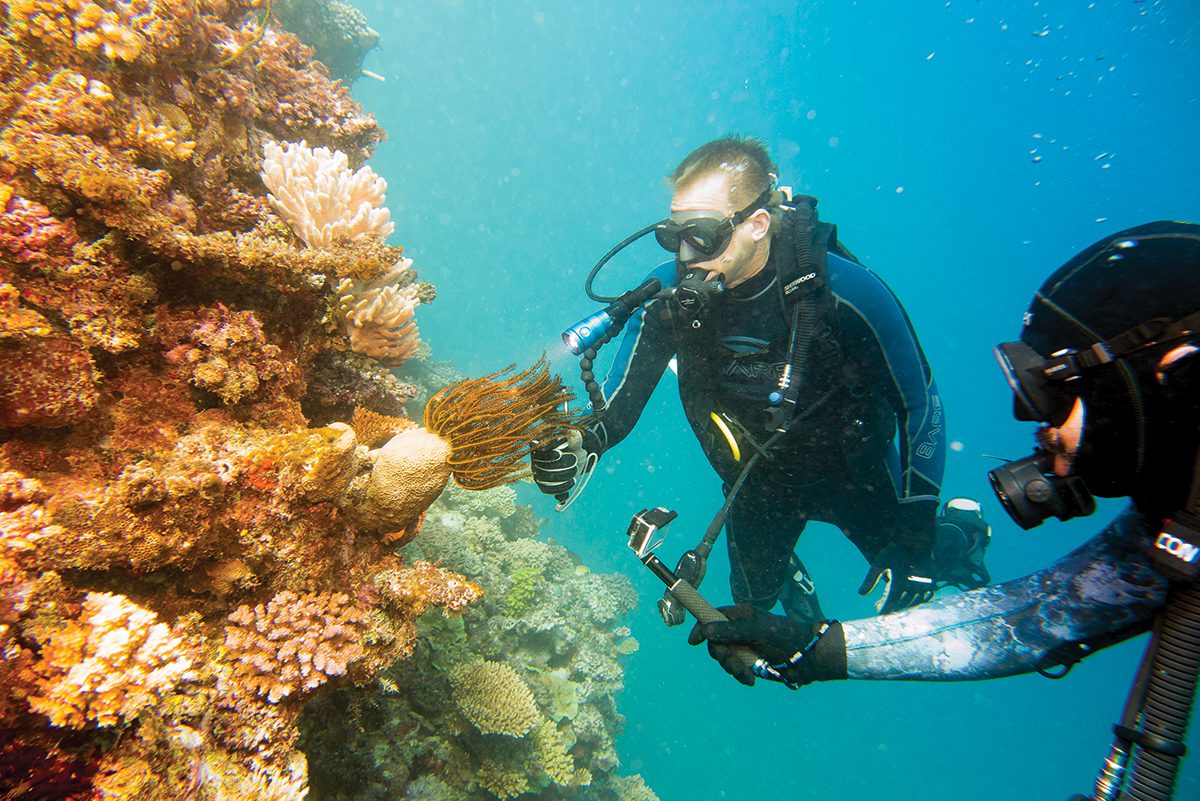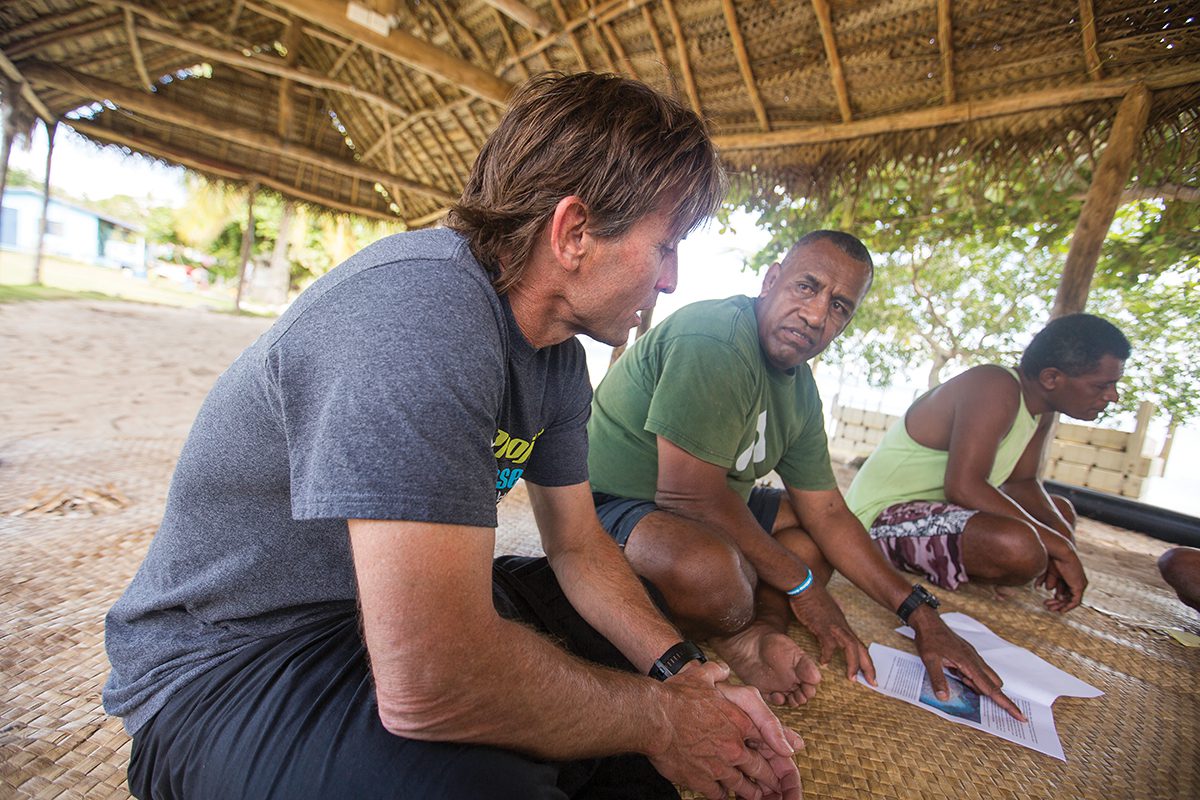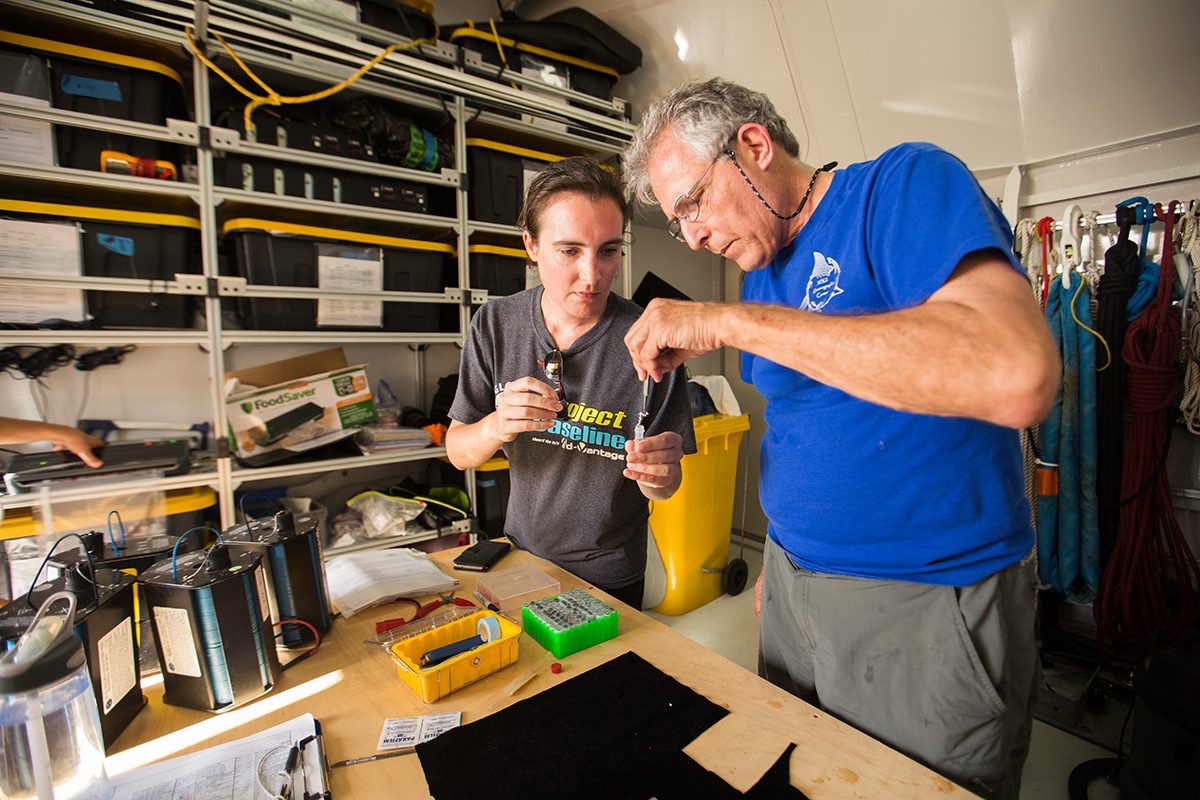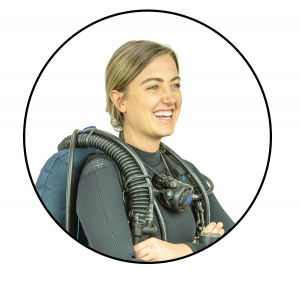Conservation
Establishing Baselines for Fiji’s Coral Reefs
Coral reefs occupy less than one percent of the ocean floor, yet 25% of all marine life call coral reefs home. But, their homes are being threatened. The oceans have been dramatically changing and this change is often going unnoticed. With the recent climate report from the Intergovernmental Panel on Climate Change (IPCC) urging governments and individuals to take action now to reduce the effects of climate change, it has become even more critical for us to start monitoring and changing the way we affect aquatic environments.

By Amanda White
Photo Credits: Rob Wilson, Frontline Photography for Project Baseline
Coral reefs occupy less than one percent of the ocean floor, yet 25% of all marine life call coral reefs home. But, their homes are being threatened. The oceans have been dramatically changing and this change is often going unnoticed. With the recent climate report from the Intergovernmental Panel on Climate Change (IPCC) urging governments and individuals to take action now to reduce the effects of climate change, it has become even more critical for us to start monitoring and changing the way we affect aquatic environments.
Over the past four years, Global Underwater Explorers’ (GUE) conservation initiative, Project Baseline, has been collaborating with scientific and government entities around the globe to provide data on critical environments using divers and submersibles. Last year, GUE sent a team of divers, scientists, and volunteers to Fiji to explore and establish baseline conditions for several of the world’s healthiest remaining coral reefs.
“It is our responsibility and certainly our mission as Project Baseline, to get out there and document these reefs in order to understand what is here and to present that, not only to scientists, but also to local people and to the world to encourage them to care more about what is here and to try harder to protect it,” Project Baseline Director Dr. Todd Kincaid said.
The mission in Fiji took place over fourteen days onboard the private motor yacht m/y Ad-Vantage, which was donated for use by the project along with its submersible Moby, to collect data on the health of deep and shallow Fijian coral reef ecosystems at ten different locations.

The Diving
For the Fiji mission, Project Baseline partnered with Dr. Ciro Rico from the University of the South Pacific in Fiji, and Dr. Brian Walker and Dr. Charles Messing from Nova Southeastern University in Florida. Drs. Walker and Rico were able to complete 16 open circuit dives to conduct detailed documentation of specific coral colonies at depths between 12 and 20 meters.The GUE technical dive team, made up of Mel Jeavons, Jamie Obern, Martin McClellan, and Kincaid, conducted three plus hour-long dives where they collected fifty-five 50-meter long video transects at depths of 30, 20, and 10 meters.
Ad-Vantage’s submersible pilots also conducted 12 video transect dives. The dives were made at the same or nearly the same locations as the dive teams but between the depths of 50 and 362 meters. The primary mission of the submersible dives was to collect vertical video transects of benthic conditions across the steepest portions of the slopes. In addition, Dr. Messing was able to go on eight submersible dives during which he documented deep benthic life forms and collected 29 physical samples. The samples were later preserved and delivered to USP to be added to their South Pacific archives.
“One of the things we did find is that as we ascended from deep water of 300-400 meters, life got more abundant and diverse as we reached the top of the deep reef wall,” Dr. Messing said. “There were also some interesting parallels with the Bahamas where I have dived before. Because both of these environments are limestone, we saw some of the same basic geological structures, and organisms used some of the same adaptations as those on the opposite side of the world, which I found really interesting.”

Reaching Out to Villages
Project Baseline missions are not limited to just science or diving, but also include public outreach. The Fijians rely on the ocean to live. Their food and their economy depend on the health of the coral reefs that surround the islands and their livelihoods are threatened by a lack of understanding and adequate protections.
To combat this threat, Project Baseline reached out to Fijian villages that were near the dive locations in order to share what is happening beneath the waves with the people it matters to the most.
We met with village leaders and invited them aboard the m/y Ad-Vantage and for tours of the ship and the sub, as well as an overview of our mission and its relevance to our efforts to protect and sustain their ties to the sea. We also met with and described our mission to municipality leaders in Vunisea and representatives of Fiji’s Department of Fisheries and Wildlife. Project Baseline hopes that by sharing what is happening underwater with the people of Fiji, they will take the first steps in managing how the reefs will be impacted in the future.

Results
The good news? There is still a cause for hope.
“The reefs that we have monitored so far are in relatively good health compared to other sites of the world,” Dr. Rico said. “And in particular to see that the Astrolabe Reef is pretty much a pristine ecosystem. I think it’s a model of healthy coral ecosystems, and it is obvious that the remoteness of the place and the fact that it is far from human settlement is an important difference.”
Not all of the locations we were able to dive were as healthy as the Great Astrolabe Reef. Signs of distress and disease were present on the reefs that were closer to populated islands.
“In the areas that we have visited on this trip, we haven’t seen evidence of mass bleaching,” Dr. Walker said. “We have seen some disease. There were low levels of disease at most sites. At sites closer to human populations we saw an increase in dead coral and cyanobacteria blooms and other indicators that they are probably being impacted by their locations.”
The reason for the diseased and dead coral is still being examined. However, all indicators point toward stresses from local unsustainable land uses – pollution and overfishing – rather than global warming or climate change. If there is a silver lining, it is that these are impacts that can be quickly and effectively countered through public engagement and an investment in sustainable practices. The effects go beyond just the health of the coral. Jeavons and Obern were a part of a previous study collecting video transects on Fijian Coral reefs and they noticed some differences since the last time they visited the islands
“You can see the commercial fishing pressure on the reefs. I remember when we were here 20 years ago there were a lot more of the big predators. A lot more grouper, a lot more snapper and they’ve just gone,” Obern, a GUE instructor from New Zealand said. “If you haven’t collected the data and you can’t give something that’s measurable, definitive to prove to people that it is gone, then it is just in my memory. To come back here and get more baseline data so we can say, no this is what’s happening going forward, is really important.”

About Project Baseline
GUE’s Project Baseline initiative started in 2009, is at the forefront of data collection efforts by citizen scientist divers around the world. With over 100 projects in 38 countries, the initiative is more than just the Global Missions you may have read about. Our volunteer divers have collected over 2,700 images, 46,000 temperature readings, and almost 4,000 visibility measurements, all of which are visible on our public database.
Top Image: Working with the m/y Advantage’s submersible named Moby, our dive teams can help accomplish scientists’ goals outside of the reach of a mechanical arm. The submersible during this trip carried scientists down the sides of the reef walls. Divers in this image are Dr. Todd Kincaid, Mel Jeavons, and Martin McClellan. Inside the sub is sub pilot Berry McGowan, Dr. Charles Messing, and Ginnie Kincaid.
Amanda White is an editor for InDepth. Her main passion in life is protecting the environment. Whether that means working to minimize her own footprint or working on a broader scale to protect wildlife, the oceans, and other bodies of water. She received her GUE Recreational Level 1 certificate in November 2016 and is ecstatic to begin her scuba diving journey. Amanda was a volunteer for Project Baseline for over a year as the communications lead during Baseline Explorer missions. Now she manages communication between Project Baseline and the public and works as the content and marketing manager for GUE. Amanda holds a Bachelor’s degree in Journalism, with an emphasis in Strategic Communications from the University of Nevada, Reno.
Amanda White is an editor for InDepth. Her main passion in life is protecting the environment. Whether that means working to minimize her own footprint or working on a broader scale to protect wildlife, the oceans, and other bodies of water. She received her GUE Recreational Level 1 certificate in November 2016 and is ecstatic to begin her scuba diving journey. Amanda was a volunteer for Project Baseline for over a year as the communications lead during Baseline Explorer missions. Now she manages communication between Project Baseline and the public and works as the content and marketing manager for GUE. Amanda holds a Bachelor’s degree in Journalism, with an emphasis in Strategic Communications from the University of Nevada, Reno.




















































